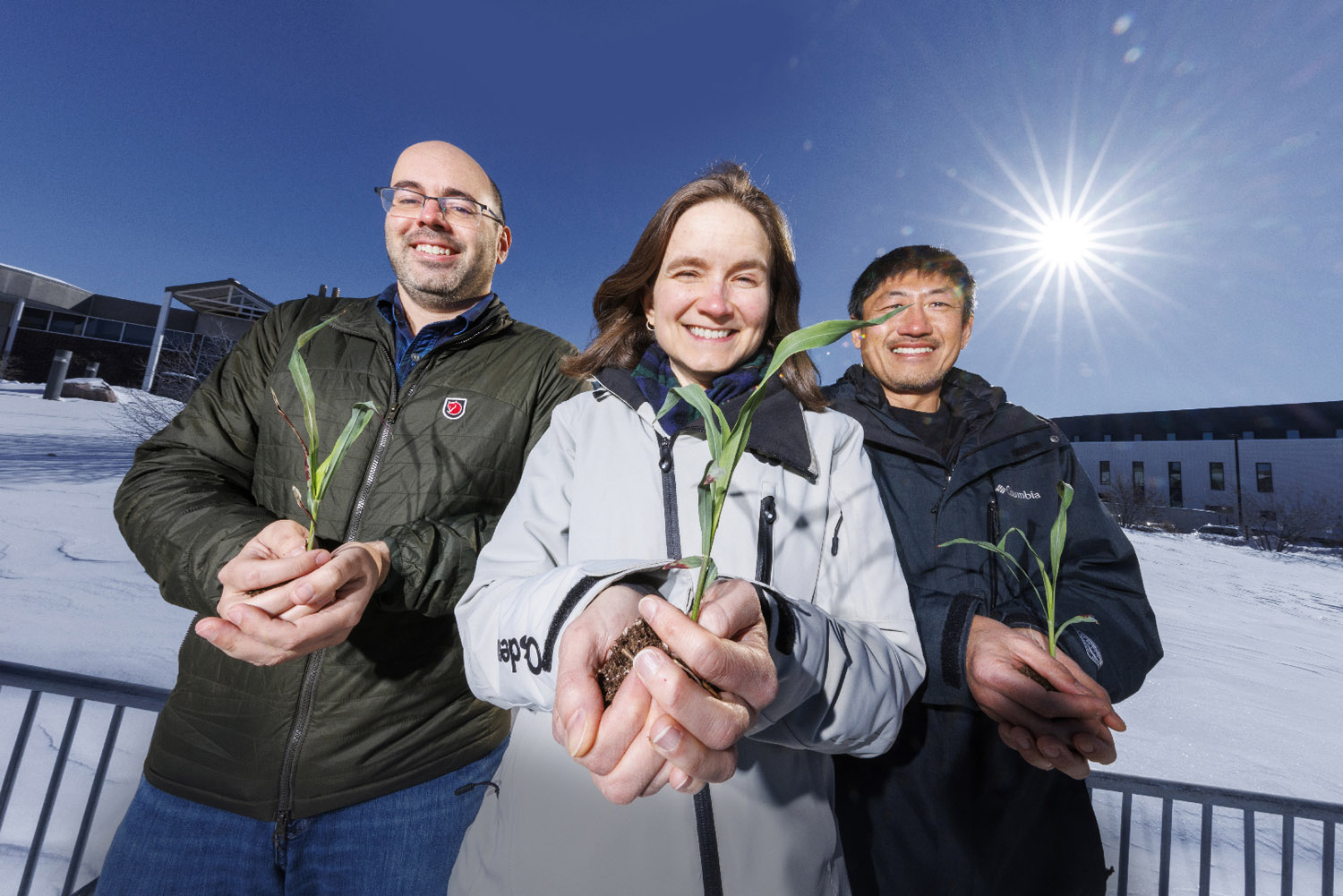Sorghum is a major player in shaping agricultural sustainability, with its low seed cost, drought tolerance and water use efficiency. But the grain has a major shortfall: It’s cold intolerant, limiting the regions where it can thrive.
Husker plant scientist Rebecca Roston leads a team aiming to give sorghum – and eventually, its close relative corn and other crops – a winter coat. The researchers are investigating how foxtail millet, which is genetically similar to sorghum, harnesses its circadian rhythm to adapt to chilly temperatures. This will shed light on how sorghum can capitalize on its daily rhythms to survive cold snaps.
James Schnable (from left), Rebecca Roston and Toshihiro Obata hold young sorghum plants outside of the Bioscience Greenhouses on City Campus.
A $1.8 million grant from the National Science Foundation funds the research.
In the project’s first publication, Roston’s team established that foxtail millet exhibits time-specific lipid and gene responses that shield it from cold stress. Sorghum also shows rhythmic responses to chilling stress – but those fluctuations do not yet translate to cold tolerance.
“Think of it like taking your vitamins at the right time for maximum effect,” said Roston, Ralph and Alice Raikes Chair of Plant Sciences and associate professor of biochemistry. “By understanding sorghum’s natural rhythms and comparing it to its more cold-tolerant relative foxtail millet, we can design strategies to enhance sorghum’s cold-fighting machinery at precisely the moment it needs it most.”
The project is one of the first to look at cold tolerance in the context of plants’ circadian rhythms. Scientists have long known that plants’ genes and gene regulation patterns change throughout the day. But there are no large-scale studies analyzing how these fluctuations impact characteristics like temperature resilience.
The strategy may help Roston’s team overcome a longstanding hurdle to engineering cold-tolerant sorghum: Changes that fortify the crop against cold also impair its performance under normal conditions. Understanding how foxtail millet navigates this tradeoff opens the door to similarly resilient sorghum varieties.
This could be a game-changer for farmers, enabling a future where food security is not threatened by a surprise frost and growth occurs earlier in the year, increasing crop productivity. The team includes James Schnable and Toshihiro Obata, members of the university’s Center for Plant Science Innovation, and Frank Harmon of the University of California, Berkeley.
